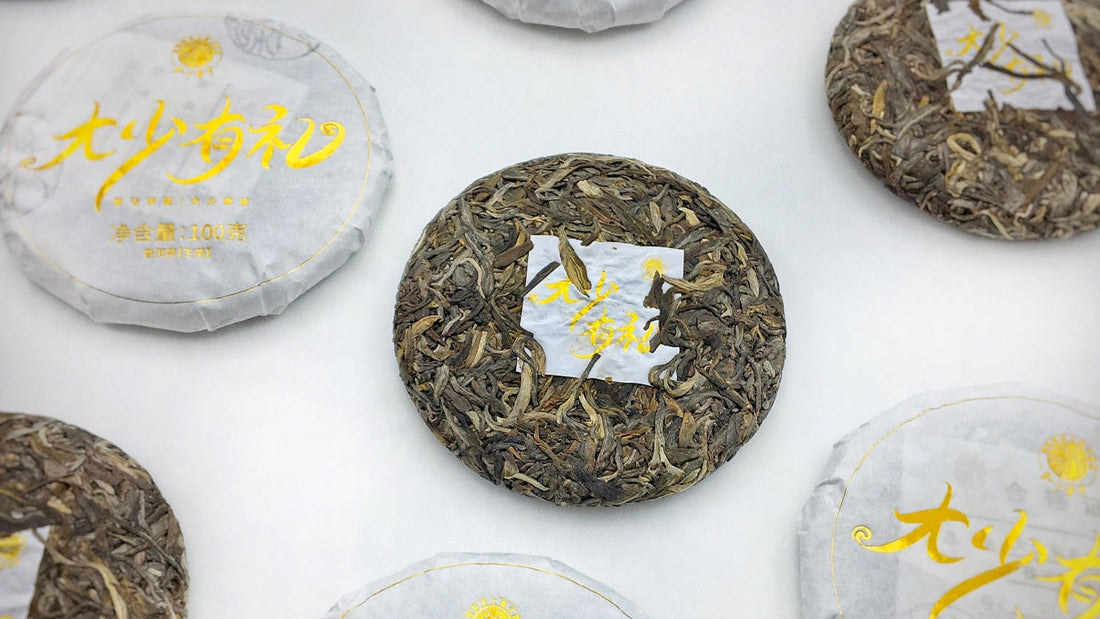
How to Judge the Aging Potential of a Pu-erh Tea Cake
Share
If you’ve ever heard people compare aging Pu-erh to aging fine wine, you’re not alone. But not every tea cake improves with time. So how do you tell which ones have true aging potential? Let’s walk through the key factors — with practical tips and real-world examples — so you can make smarter choices when buying or storing Pu-erh tea.

1. Start with High-Quality Leaf Material
This is the foundation of a tea worth aging. If the leaves are broken, dusty, or low grade, no amount of storage magic will turn them into gold. A promising Pu-erh cake usually has:
- Mostly intact, whole leaves
- Moderate bud content (especially for raw / “sheng” Pu-erh)
- A clean, natural aroma without off-smells
Think of it like wine grapes — great aging starts with great raw material.
2. Compression and Cake Structure
The way the cake is pressed affects how air and moisture interact with it. Too tight, and aging slows down; too loose, and it might dry out or spoil too quickly.
- Moderately pressed cakes age most evenly.
- Loose cakes (or tuo cha) change faster but need more careful storage.
- Very dense “iron cakes” age slowly — great for long-term collectors.
Think of it like aging cheese: too dense, and the inside never ripens; too loose, and it spoils.
3. Region, Cultivar, and Growing Conditions
Teas grown in high-altitude, biodiverse environments often develop deeper structure and complexity — both of which help them age gracefully. For example, a Pu-erh from Yunnan’s mountain regions will likely have stronger aging potential than one from lowland plantations.
4. Storage Conditions: Humidity, Temperature, and Airflow
This is where most people go right — or wrong. The right environment can make a world of difference:
- Humidity: Keep it moderate (around 60–75% RH). Too dry, and the tea stagnates; too wet, and it risks mold.
- Temperature: Consistency matters more than perfection. Avoid large swings.
- Airflow: Gentle ventilation is ideal — enough for air exchange, but not drafty.
- No strong odors: Pu-erh absorbs scents easily, so store it away from spices or cleaning products.
In the U.S., where indoor heating and A/C can dry the air, many collectors use small “pumidors” or humidity-controlled cabinets to maintain stability.

5. Visual and Sensory Clues Before Brewing
- Leaf appearance: Healthy cakes slowly shift from greenish to brown tones over time. You may notice fine white crystals (called tea frost) — a good sign of natural aging.
- Aroma: A balanced scent of dried leaves, wood, or clean earth. Avoid musty or sour notes.
- Liquor color: Raw Pu-erh transitions from pale gold to amber to reddish brown while staying clear and bright.
6. Tasting Over Time
Ultimately, taste is the real test. A tea with good aging potential will:
- Lose harsh bitterness and become smoother
- Develop a thicker, silkier mouthfeel
- Show “returning sweetness” (hui gan) that lingers pleasantly
- Reveal new flavor layers — wood, dried fruit, camphor, and subtle earthiness
If your cake evolves this way over the years, congratulations — it’s aging beautifully.

7. Raw vs. Ripe Pu-erh: Know the Difference
Ripe (shou) Pu-erh is fermented during production, so it starts out smoother and doesn’t need decades of aging. Raw (sheng) Pu-erh, on the other hand, changes dramatically over time but requires more patience and care.
Final Thoughts
Judging a Pu-erh cake’s aging potential isn’t about guessing the future — it’s about understanding the tea’s character and giving it the right environment to grow. Start with good material, store it wisely, and taste it regularly. The joy is in watching it evolve — one steep at a time.




